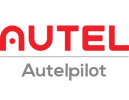Most Popular Consumer Drone Brands: Autel Drones and DJI Drones. The two drone companies continue to innovate, upgrade drone technology, and compete in the drone market. Here we will review the newly released DJI Mini 3 in December 2022 and the newly released Autel EVO Nano+ in January 2022.
Both Autel drone and DJI drone are the top few in the U.S. drone sales list. The two continue to innovate in the R&D and production of consumer drones, and released drone products with low cost and high value. Among lightweight drones, DJI launched the Mini series, and Autel launched the Nano series. The Mini 3 was released later than the Mini 3 Pro, let's take a look at the new features of the Mini 3.
See also: DJI Mini 3 Pro vs Autel EVO Nano+
There are so many options for ultra-light quadcopter drones, it is even more important to invest in a professional ultra-light aircraft. The new version of the quadcopter drone has triggered our new desire to explore, DJI Mini 3 VS Autel EVO Nano+, Who is the better drone?
DJI Mini 3 vs Autel EVO Nano+: Design

| DJI Mini 3 | Autel EVO Nano Plus | |
| Take-off weight | <249g | <249g |
| Dimensions | 251×362×72 mm | 170 x 215 x 55 mm |
| Folded dimensions | 148×90×62 mm | 142 x 94 x 55 mm |
| Sensing Type | Downward | Forward, backward, and downward |
Autel EVO Nano+ is light in design, eye-catching in color, and has a variety of colors to choose from. EVO Nano+ comes to mind when mentioning orange drones. Also available in grey, white and red. Autel EVO Nano+ has a lightweight model, weighing less than 249g, with foldable wings, and a streamlined body. It has won the IF Award and the Red Dot Award.
The shape of the DJI Mini 3 is consistent with the Mini 3 Pro released earlier. It has a gray body, low front and high rear, weighs less than 250g, and has only one downward sensor. It is an intermediate choice between mini 2 and mini 3 pro.
What Autel EVO Nano+ has in common with DJI Mini 3 is that the charging port and battery are located at the rear, and the camera gimbal is located at the front.
In addition, the wings of the Autel drone have extra paddle straps when they are folded, and the battery can be charged independently or when connected to the drone. And DJI's Mini series batteries can only get battery status when plugged into the aircraft, which will take too much time to check the spare battery.
DJI Mini 3 vs Autel EVO Nano+: Speed and maneuverability

| DJI Mini 3 | Autel EVO Nano Plus | |
| Max Ascent Speed | 5m/s | 6m/s |
| Max Horizontal Speed | 16m/s | 13m/s |
As lightweight drones, DJI Mini 3 and Autel EVO Nano+ claim to have level 5 wind resistance. The two drones are hardly affected by light winds and can move forward and backward and rotate left and right freely.
Both drones feature three flight modes, which DJI calls Cine, Normal, and Sport, while Autel calls them Smooth, Standard, and Ludicrous. The drone has different flight speeds in different modes. After starting the maximum speed, the drone's obstacle avoidance sensor will be invalid.
Autel EVO Nano+ has a three-way obstacle avoidance sensor, it will hover instead of flying around after encountering an obstacle, DJI Mini 3 only has a downward sensor, so it will not stop during flight, which requires a drone pilot Keep an eye on your quadcopter drone at all times.
DJI Mini 3 vs. Autel EVO Nano+: Battery life
| DJI Mini 3 | Mini 3 Flight Battery | Autel EVO Nano Plus | |
| Theoretical maximum battery life | 38 minutes | 51 minutes | 28 minutes |
| Battery life while hovering | 30 minutes | 40 minutes | 28 minutes |
| Drop speed | 2453mAh | 3850mAh | 2250mAh |
| Battery weight | 80.5 g | 121 g | 83 g |
The quadcopter drone is not only flying non-stop, but also can hover in the air for a long time, and shoot with a fixed drone perspective.
The drone is always most efficient when it is flying forward, but every pilot will not let the drone fly for the maximum amount of time. Because the drone will reserve the battery power required for the return time, which requires about 20% of the lighting.
The change of the battery power of the drone will also be affected by the weather environment, and it is difficult to reach the maximum value of the experimental environment. At the same time, both drones are used as mini drones. EVO Nano+ will greatly shorten the flight time of the drone due to the addition of more sensors.
DJI Mini 3 vs Autel Evo Nano+: Gimbal and camera

| DJI Mini 3 | Autel EVO Nano Plus | |
| Stabilization | 3-axis (tilt, roll, and pan) | 3-axis (tilt, roll, and pan) |
| Tilt | -135°to 80° | -125° to 35° |
| Roll | -135° to 45° | -33° to 34° |
| Pan | -30°to 30° | -25° to 25° |
Both DJI Mini 3 and Autel Evo Nano+ have three-axis gimbals, which can better capture images and videos. The camera drone equipped with a gimbal can well balance the lens blur caused by the movement of the drone.
DJI Mini 3 supports True Vertical Shooting, which can rotate the camera 90˚ to enter portrait mode. However, EVO Nano+ does not have this feature. The vertical screen images and videos are cropped, which means that certain clarity may be lost.
DJI Mini 3 vs Autel EVO Nano+: Controller and scope

| DJI Mini 3 | Autel EVO Nano Plus | |
| Technology | DJI O2 | Autel SkyLink |
| Range – FCC | 10km | 10km |
| Roll – CE | 6km | 6km |
| Live view quality | 1080p/30fps | 2.7k/30fps |
In terms of communication technology, both drones far exceed the maximum value of toy drones, and the image transmission range can be extended to a range of 10 kilometers. But the Autel has an edge when it comes to live view video, which plays at 2.7K resolution, which is better quality than DJI's 1080P display.
DJI Mini 3 supports transmission frequencies of 2.400-2.4835 GHz, 5.725-5.850 GHz, and EVO Nano Plus supports transmission frequencies of 2.400-2.4835 GHz, 5.725-5.850 GHz, 5.150-5.250 GHz. The two will automatically switch according to the signal level.
The Nano Plus has Autel's new handle, which is very comfortable to hold, is also lightweight, and has no display. DJI offers the standard RC-N1 (without display) and the DJI RC (with display).
The remote control without a display screen can be connected to a mobile phone. The brightness of the mobile phone is obviously stronger than that of the remote control, and it can be easily operated during the day.
DJI Mini 3 vs Autel EVO Nano+: Still Photos
| DJI Mini 3 | Autel EVO Nano Plus | |
| Resolution | 12 MP | 50 MP |
| Sensor size | 1/1.3 (0.769) inch | 1/1.28 (0.781) inch |
| Sensitivity range | 100-3200 | 100-6400 |
| Field of View (FOV) | 82.1° | 85° |
| Maximum aperture | ƒ/1.7 | ƒ/1.9 |
| Format | JPEG/DNG (raw format) | JPEG/DNG (raw format) |
There's a big difference in sensor size or megapixel count between the two drones, and the Mini 3 doesn't seem to have an edge. When viewing images, we can see sharper still images in the EVO Nano+. EVO Nano+ also adds RYYB color array design, which can effectively capture about 40% more light.
From the images taken by the two drones, it can be seen that the details of the EVO Nano+ image have been significantly optimized, with less noise, and very good saturation and clarity. Both drones support multiple camera modes: Single Shot, Photo Burst, Automatic Exposure Bracketing (AEB), Time Lapse, Panorama, Sphere, 180°, Wide Angle, HDR.
DJI Mini 3 vs. Autel EVO Nano+: Video
| DJI Mini 3 | Autel EVO Nano Plus | |
| Resolution | 4K/30fps | 4K/30fps |
| Slow motion | 1080P/120fp | 1080P/120fp |
| Video Bitrate | 100mbps | 100mbps |
| 4K digital zoom | 2x | 2x |
| 1080P digital zoom | 4x | 16x |
DJI offers the flat color profile D-Cinelike, and Autel offers the 8-bit A-Log color log. Both drones support video capture with a maximum resolution of 4K. The Nano+'s video looks sharper, with more saturated colors. At the same time, Nano+ has a digital zoom that can enlarge the focal length to 16x, which also adds a new charm to the shooting of drone videos.
DJI Mini 3 vs Autel EVO Nano+: Software Features
AI object tracking for quadcopter drones is very attractive. EVO Nano+ has been launched Dynamic Track 2.1, capable of tracking human subjects for shooting, while the DJI mini 3 does not claim this.
Both drones offer Hyperlapse capabilities, and both have pre-programmed "QuickShots" (automatic flight paths for capturing shareable video). The Nano+ has Flick, Fade Away, Rocket, and Orbit four, while the DJI Mini 3 offers QuickShots such as Dronie, Circle, Helix, Rocket, and Boomerang. That might sound like a win for DJI, but Autel's Quickshots can shoot in 4K, while DJI drones drop back to 1080p.
The Nano+ has an interesting extra feature: recording ground sounds in real time. The ability to record from your phone's microphone the video you're shooting - effectively narrating (or keeping audio notes). For some, it can be very useful.
DJI Mini 3 vs Autel EVO Nano+: Verdict
In this DJI Mini 3 vs Autel EVO Nano + review, the Autel EVO Nano + is the winner. Autel's photographic imaging capabilities look more appealing, and it has a three-way obstacle avoidance mode. The DJI mini 3 has more flight time and multiple remote control options. Currently, Autel EVO Nano + is priced at US$659, and DJI Mini 3 is priced at US$559. You can choose the entry-level drone that suits you more based on your needs.








